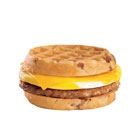Julea Ward and Jennifer Keeton want to be therapists, but they don’t want to help icky gay people because Jesus.
State legislators, purporting to know more about the ethics of these professions than the professionals themselves, want to make it legal to discriminate based on “sincerely-held religious beliefs.” One suspects that it has not occurred to most of them that this could apply to people who don’t think just like them.
If someone who wants to enter into a profession with a duty to help people, but just can’t seem to let go of certain Bronze Age superstitions, I hardly see how that is their patients’ problem, but that is exactly what they want to do. Some of them want to foist their ideology onto patients, but I rather doubt they’d entertain attempts by those patients to present their side of things.
Now, being a good American, I support the right of people to believe whatever crazy crap they want, so long as they don’t hurt other people. And that’s the problem here.
This really, really hurts people.
So I have a compromise.
If a doctor, therapist, dentist, etc. just can’t get over the fact that the patient in front of them has a sexual orientation that is different from theirs (or some other perfectly-legal activity they just can’t keep from meddling in), they don’t have to treat them.
But the patient doesn’t have to pay them.
And because this rejection is highly likely to hurt the patient, the devout professional has to recommend an alternate professional that they know will treat the patient.
One more thing: in consideration of the fact that the devout professional has clearly wasted the patient’s time, the professional has to pay for the first session with the new professional. Because you have the right to believe what you want, but you cannot foist that upon a person in need who is relying on your professional skill–and if you just have to try anyway, it will cost you. Your professional license is a privilege, not a right.
(Preferably, devout professionals should disclose their prejudices in their marketing materials, but let’s see how you handle this responsibility first.)
If everyone can agree on that, then the Juleas and Jennifers of the world can let their freak flags fly, and the rest of us won’t be quite as bothered.







!['NCI iced tea,' Source: National Cancer Institute, Author: Renee Comet (photographer), AV Number: AV-9400-4169, Date Created: 1994 [Public domain] via Wikimedia Commons 'NCI iced tea,' Source: National Cancer Institute, Author: Renee Comet (photographer), AV Number: AV-9400-4169, Date Created: 1994 [Public domain] via Wikimedia Commons](http://upload.wikimedia.org/wikipedia/commons/thumb/e/e1/NCI_iced_tea.jpg/350px-NCI_iced_tea.jpg)
!['3D model hydrogen bonds in water,' by User Qwerter at Czech wikipedia: Qwerter. Transferred from cs.wikipedia; Transfer was stated to be made by User:sevela.p. Translated to english by by Michal Maňas (User:snek01). Vectorized by Magasjukur2 (File:3D model hydrogen bonds in water.jpg) [CC-BY-SA-3.0 (http://creativecommons.org/licenses/by-sa/3.0)], via Wikimedia Commons '3D model hydrogen bonds in water,' by User Qwerter at Czech wikipedia: Qwerter. Transferred from cs.wikipedia; Transfer was stated to be made by User:sevela.p. Translated to english by by Michal Maňas (User:snek01). Vectorized by Magasjukur2 (File:3D model hydrogen bonds in water.jpg) [CC-BY-SA-3.0 (http://creativecommons.org/licenses/by-sa/3.0)], via Wikimedia Commons](http://upload.wikimedia.org/wikipedia/commons/thumb/c/c6/3D_model_hydrogen_bonds_in_water.svg/256px-3D_model_hydrogen_bonds_in_water.svg.png)
!['Hurricane Isabel from ISS,' image courtesy of Mike Trenchard, Earth Sciences & Image Analysis Laboratory , Johnson Space Center.[see page for license], via Wikimedia Commons 'Hurricane Isabel from ISS,' image courtesy of Mike Trenchard, Earth Sciences & Image Analysis Laboratory , Johnson Space Center.[see page for license], via Wikimedia Commons](http://upload.wikimedia.org/wikipedia/commons/thumb/0/04/Hurricane_Isabel_from_ISS.jpg/512px-Hurricane_Isabel_from_ISS.jpg)
![Where's My Kashi?! by Nancy Wilson [Fair use] via Facebook Where's My Kashi?! by Nancy Wilson [Fair use] via Facebook](https://fbcdn-photos-a.akamaihd.net/hphotos-ak-ash3/s720x720/562436_3773373410193_1152535904_5579660_1136799469_n.jpg?dl=1)
!['Hostess Twinkies' by Evan-Amos (Own work) [CC0], via Wikimedia Commons 'Hostess Twinkies' by Evan-Amos (Own work) [CC0], via Wikimedia Commons](http://upload.wikimedia.org/wikipedia/commons/thumb/6/67/Hostess-Twinkies.jpg/256px-Hostess-Twinkies.jpg)
!['Inside a wild-type banana' by Warut Roonguthai (Own work) [GFDL (www.gnu.org/copyleft/fdl.html) or CC-BY-SA-3.0-2.5-2.0-1.0 (www.creativecommons.org/licenses/by-sa/3.0)], via Wikimedia Commons 'Inside a wild-type banana' by Warut Roonguthai (Own work) [GFDL (www.gnu.org/copyleft/fdl.html) or CC-BY-SA-3.0-2.5-2.0-1.0 (www.creativecommons.org/licenses/by-sa/3.0)], via Wikimedia Commons](http://upload.wikimedia.org/wikipedia/commons/thumb/e/eb/Inside_a_wild-type_banana.jpg/256px-Inside_a_wild-type_banana.jpg)

![Sphygmomanometer&Cuff by ML5 at en.wikipedia [Public domain], from Wikimedia Commons Sphygmomanometer&Cuff](http://upload.wikimedia.org/wikipedia/commons/thumb/a/ae/Sphygmomanometer%26Cuff.JPG/256px-Sphygmomanometer%26Cuff.JPG)